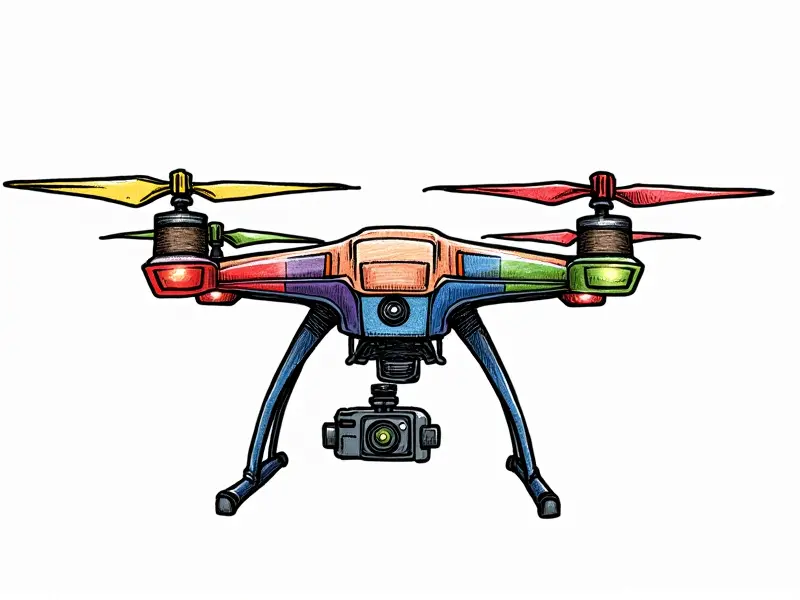How to fly RC helicopter?

Mastering RC Helicopter Basics
Flying an RC (Radio Controlled) helicopter is a thrilling hobby that requires patience, practice, and the right knowledge. Before you take off into the skies with your RC heli, it's essential to understand the basics of how these miniature marvels work.
Beginner's Guide to Flying RC Helis
The journey begins when you first hold an RC helicopter in your hands. Start by familiarizing yourself with all its components and controls. Understanding how each part functions is crucial for a smooth flying experience.
Top Tips for Flying RC Helicopters
- Start Indoors: Begin your training inside to avoid wind interference.
- Practice Hovering: Master the art of hovering before attempting complex maneuvers.
- Use a Simulator: Many RC helicopters come with simulators that help you get used to controls without risking damage.
Learn to Fly RC Helis in 5 Steps
The process of learning to fly an RC helicopter can be broken down into five manageable steps. Follow these guidelines to build your skills progressively:
- Familiarize Yourself with the Equipment: Understand all parts and controls.
- Practice Ground Handling: Learn how each control affects movement on the ground.
- Hovering Practice: Master vertical flight by maintaining a steady hover position.
- Moving Horizontally: Once you're comfortable hovering, move to horizontal movements.
- Advanced Maneuvers: After mastering basic flying techniques, try more complex maneuvers like loops and rolls.
Essential Skills for RC Helicopter Pilots
To become a proficient RC helicopter pilot, you need to develop certain essential skills. These include:
- Hand-Eye Coordination: The ability to control the heli with precision.
- Fine Motor Skills: Smooth and precise movements of your fingers and thumbs.
- Mental Focus: Concentration on multiple controls simultaneously.
RC Helicopter Controls Explained Simply
The RC helicopter's control system is the key to flying it smoothly. Here’s a breakdown of each control and its function:
- Main Control Stick (Primary Control): Used for pitch and roll.
- Auxiliary Control Stick (Secondary Control): Manages throttle and yaw.
- Trim Controls: Adjust the heli's balance to compensate for wind or battery drain.
Tips for Smooth RC Helicopter Flights
To ensure your flights are smooth and enjoyable, follow these tips:
- Check Battery Levels: Ensure batteries are fully charged before each flight.
- Weather Conditions: Avoid flying in strong winds or heavy rain.
- Maintain Distance: Keep a safe distance from obstacles and other pilots.
Quick Start Guide: RC Helicopter Flight
A quick start guide is essential for beginners. Here’s how to get started:
- Charge Batteries: Ensure your battery pack is fully charged.
- Pre-flight Check: Inspect the heli for any loose parts or damage.
- Ground Handling: Practice moving the heli on the ground to understand controls.
- First Flight: Start with a short flight, focusing on hovering and basic maneuvers.
Mastering Hover and Maneuvers with RC Heli
Mastery of hover and maneuver techniques is crucial for advanced flying. Here’s how to improve:
- Practice Regularly: Consistent practice enhances muscle memory.
- Use a Simulator: Practice complex maneuvers in a safe environment before attempting them with your real heli.
- Analyze Video Footage: Review recordings of your flights to identify areas for improvement.
Flying Techniques for RC Helicopters
To become an expert, you need to master various flying techniques. Some advanced maneuvers include:
- Loops and Rolls: Perform these aerobatic moves with precision and control.
- Circle Flight: Learn how to maintain a steady circular path in the air.
- Pirouettes: Spin your helicopter around its vertical axis smoothly.
RC Helicopter Controls Demystified
The complexity of RC helicopter controls can be daunting, but with practice and patience, you’ll soon understand them. Here’s a simplified explanation:
- Main Control Stick: Controls pitch (forward/backward tilt) and roll (side-to-side tilt).
- Auxiliary Control Stick: Manages throttle (speed) and yaw (rotational movement).
Conclusion
Flying an RC helicopter is a rewarding hobby that combines skill, patience, and passion. By following the steps outlined in this guide—from mastering basic controls to performing advanced maneuvers—you can become a proficient pilot. Remember, practice makes perfect, so keep flying and refining your techniques for endless enjoyment.

